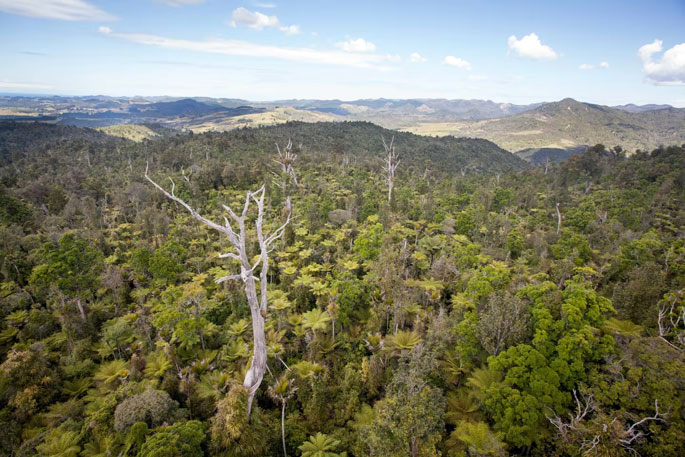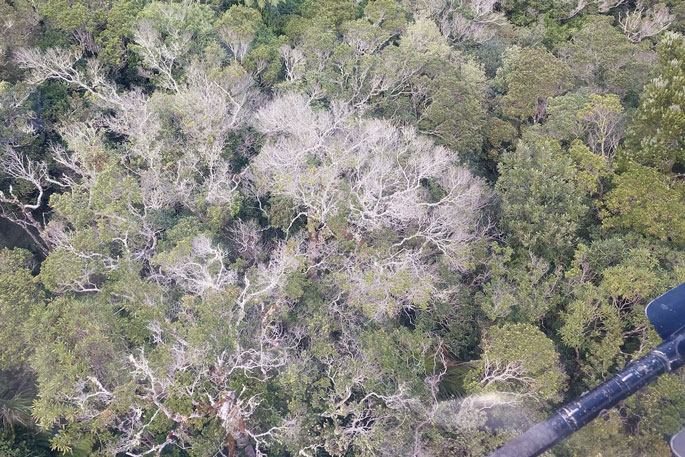Advanced high-definition cameras trialled to monitor canopy health in Coromandel Forest Park are showing “stark” differences where possum populations are controlled.
The Department of Conservation is using small high-resolution cameras fitted to a fixed-wing aircraft in a new method for collecting forest canopy data.
DOC monitoring science advisor Terry Greene says it's now an important measure for the department’s work in assessing forest health.
The cameras allowed for a comparison of forest canopy health between two adjacent tracts of land in the Papakai area of the park, totalling 2016 hectares.
“The aircraft’s flight path took it over two distinct areas of Papakai, a 1300ha strip we’ve treated with 1080 to control possums, and a 716ha area where we haven’t.
“We analysed the images to determine the extent of dead and living trees in the canopy.
“The differences between treated and untreated areas are stark, with more than eight times the amount of dead wood seen in the untreated area compared to the Papakai predator control area.”
The high-resolution images allowed individual trees to be identified within the forest canopy and then collated into a seamless picture or “orthomosaic”.
Terry says the images are then analysed using computer algorithms to group pixels with similar characteristics, enabling trees to be classed as either dead or alive.
The difference in the size of the treated and untreated areas (1300ha compared to 716ha) was factored into the analysis so they could be more equally compared.
“The trial results correlate with long-term predator control in the Papakai area.
“Where possums are controlled, the forest canopy is much healthier in the images captured and where there is no possum control there is significantly more dead wood.”
Terry says possums are known to go for the most appetising species first.
 The forest canopy in Papakai.
The forest canopy in Papakai.
In the Coromandel, that's tōtara and kamahi species.
“Possums will continually target these trees, eating all their foliage and eventually killing the tree.; over time, possums will impact the structure and composition of a forest as the canopy trees are replaced by less possum-palatable species.
“The reduction of healthy forest canopy trees means the wider forest is more susceptible to disease and storm events which cause further dieback and can ultimately lead to complete collapse of the forest ecosystem.”
Terry says more work is needed to assess the relative contribution of other factors such as drought and disease to assessments of forest canopy mortality.
The protected Coromandel Forest Park is also home to native species such as Archey’s frogs, Coromandel striped gecko and the Coromandel brown kiwi.
Forest canopy monitoring is part of DOC’s broader programme to monitor the outcomes of its predator control work for the native species and forests that it’s designed to protect.



0 comments
Leave a Comment
You must be logged in to make a comment.